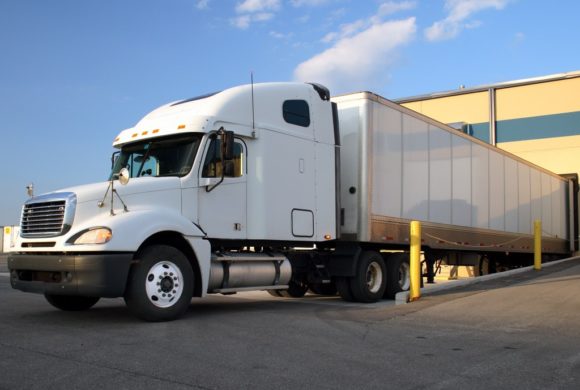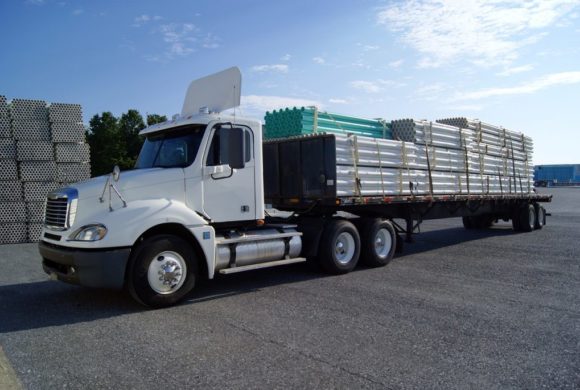
by Queener Law | Jun 1, 2016 | Tennessee, Trucking Accident
In late April, a semi casually rolled into a home in Greenbrier. The driver left his rig unattended to visit a family member. No one was killed, but a home was destroyed and had the timing of the incident been different, the outcome could’ve been far more disastrous.
On the surface this seems more to do with bad driving habits than laws or oversight. However, gaps in both regulations and oversight lead to scores of similar incidents each year. Tennessee truck accident lawyer Henry Queener has handled numerous cases where he thinks improved enforcement would make a difference.
“The problem isn’t always the drivers or their habits,” Queener says. “We find profiteering by large trucking firms and a lack of funding for officials to oversee code enforcement, safety checks and other vital functions codified in law is what causes harm.”
According to CDC publications for 2015, truck drivers were the most likely candidates for on-the-job deaths, with 65% of those deaths happening as the direct result of a truck accident in 2012. NTSB data shows truck involvement in nearly 25% of accidents in work zones, and as many as one in eight fatal accidents on American roads. Tennessee truck accident lawyers know 119 people died in truck accidents here last year.
Technology to alert drivers to road hazards, remind drivers of important maintenance and vehicle operations issues, and track the activities of truckers exists, but is rarely used on big rigs in America despite it’s prevalence elsewhere. Truck accident lawyers agree that though mandating the technology used in Europe to keep truck accidents from happening seems attractive, it is costly. “More effective enforcement of existing regulations would be a good start toward safer roads for all,” says Queener.

by Queener Law | May 26, 2016 | Tennessee, Trucking Accident
TDOT Crew Member Killed After Semi Veers Off Road
A Tennessee Department of Transportation worker was killed on I-40 when a semi truck veered off the road and hit him. 65-year-old David Younger died as a result of his injuries. Younger was with a crew of three TDOT trucks when the accident occurred. The crew had pulled over to repair a flat tire on one of the trucks. Two other TDOT employees were injured in the wreck, as was the driver of the semi.
Crews Face Dangerous Job
Eighteen people died in work zone crashes last year, including four TDOT workers. Over 100 TDOT workers have been lost in the line of duty since 1948. These workers are honored each year with special displays in Chattanooga, Knoxville, Memphis and Nashville.
To ensure that drivers and workers are safe in work zones, drivers are encouraged to:
- Avoid texting or tweeting while driving.
- Avoid adjusting the radio.
- Be aware of workers and equipment.
- Obey all posted speed limits and caution signs.
Move Over Law Violated
Lt. Bill Miller with the Tennessee Highway Patrol stated that the I-40 crash was under investigation because the driver of the semi violated the Move Over Law. The Move Over Law was initially enacted in 2006 and required motorists to move over to an adjacent lane or slow down when passing stopped emergency vehicles. The law was expanded in 2011 to include utility service equipment.
The accident had a profound effect on the workers involved. David Younger left behind his wife of over 40 years, and two children and grandchildren. Accidents involving semi truckscan be caused by driver negligence, speeding, overloaded trucks and many other factors.
It is important to contact a semi truck accident lawyer as soon as possible if a crash occurs. Truck companies have considerable resources available and a victim or the victim’s family should act quickly to ensure that necessary evidence is obtained.
Keeping a Safe Working Environment
All workers deserve to have a safe working environment. The Move Over Law was put in place to help ensure safety for TDOT workers, emergency workers and other personnel. Violations of this law and negligence of drivers can have a lasting impact on workers and their loved ones. Drivers should buckle up, put down the phone, and slow down in work zones.

by Queener Law | May 20, 2016 | Colorado, Kentucky, Tennessee, Trucking Accident
According to the United States Department of Transportation, larger, heavier trucks are associated with a higher risk for serious large truck accidents than smaller, single trailer trucks. Not surprisingly, law enforcement officials, safety leaders, elected officials and even individual truck drivers themselves agree. In fact, a recent poll reveals that an alarming 95 percent of law enforcement officers who were surveyed feel that longer, heavier trucks will be more dangerous. Additionally, an estimated 88 percent of individual truckers who were asked believe that the increased use of larger trucks will negatively impact the safety of America’s roadways.
Large Truck Weight Limits
Large truck weight regulations have been the topic for debate for decades, and in September of 2015, the Safe, Flexible and Efficient Trucking Act was introduced to the House. Fortunately, the amendment that would have raised large truck weight limits to an alarming 91,000 pounds was rejected. Because heavier trucks are more difficult to steer, can become top-heavy and more prone to rollovers, and take a longer distance to stop, the added weight could have posed significant dangers to everyone on the road. Additionally, the heavier trucks would have caused more damage to the roads than the typical 80,000 pound trucks do, causing poor infrastructure that would endanger the lives of motor vehicle operators and their passengers. Sadly, in an effort to transport an increased amount of cargo, many trucks continue to be overloaded, exceeding the federal weight regulations.
Extending the Length of Twin-Trailers
The weight of large trucks isn’t the only issue at hand, however. The Coalition for Efficient & Responsible Trucking (CERT) supported a proposal to increase the maximum length of twin-trailer semi-trucks last year as well. Current regulations allow double-trailer rigs to have trailers that are a maximum of 28 feet long. Advocates aimed at increasing that length to 33 feet to increase the amount of cargo that truck drivers could transport in a single trip. While it is true that the legislation would have likely resulted in fewer trucks being on the nation’s roads, the dangers associated with the longer trucks significantly outweighed the benefits of less congestion.
Smaller cars and pedestrians can already be difficult for truckers to see, and longer trailers would only make that worse. Passing and merging would become more difficult, and the added trailer length would cause these trucks to have a 22-foot longer stopping distance. Fortunately, the language to lengthen twin-trailers was not approved.

by Queener Law | May 14, 2016 | Tennessee, Trucking Accident
Recently, Tennessee was named the best state to own a small trucking company, in part because of its lenient trucking regulations. While federal regulations dictate certain requirements for trucking companies, regulations differ from state to state.
Tennessee Trucking Law
The recent survey that placed Tennessee at the top of the list for best states to own a small trucking business considered several factors, along with regulations, including friendliness to truck drivers and overnight parking fees. Favorable regulations, however are a big reason that truckers flock to Tennessee.
State law regulates much of the trucking industry. For example, no commercial vehicle may weigh more than 80,000 pounds. Trucks may also be no taller than 13 feet, six inches and no wider than 8 feet.
Tennessee law also regulates commercial driver license issuance. Trucking companies must ensure that each of their drivers has a current commercial driver license, along with a valid medical card.
In comparison with regulations in other states, Tennessee’s laws are fairly lax. In California, for example, certain laws that cap emissions and limit driving hours are pushing trucking companies toward states like Tennessee. Carriers in California are required to givea paid 30-minute meal break for every five hours on the clock and a paid 10-minute break for every four hours behind the wheel.
Though Tennessee law accounts for many trucking regulations, federal trucking industry rules trump local requirements, when a conflict arises. These federal laws regulate interstate trucking and determine things like the amount of hours that a trucker can drive before resting and which records must be kept.
Any truck driver or trucking company that violates either Tennessee or federal law may be found liable for any injuries or deaths that they are responsible for.
Truck Accidents and Liability
When a truck driver or the company that they work for does not comply with state or federal regulations, they could be found liable if an accident occurs. In Tennessee, a crash victim must prove that a defendant breached a legal duty for them to be found negligent. Once a victim determines that a driver or company’s negligence caused his or her injuries, they may be eligible to receive compensation. Victims may consult with semi truck accident attorneys to determine if filing a lawsuit is warranted, and if a driver or trucking company violated state or federal trucking laws.

by Queener Law | May 7, 2016 | Tennessee, Trucking Accident
The Department of Transportation (DoT) budget is at the center of a storm of criticism in Washington, DC. The bill provides necessary funding to the DoT, but includes problematic language that eases restrictions on the hours of service for truck drivers, according to a Nashville truck accident attorney. Debate over trucking industry regulations is nothing new; however, a steady rise in serious accidents and fatalities involving trucks make this debate more visible.
Role Of The Federal Government
Regulation of interstate commerce is one of the enumerated, or defined powers in the Constitution. The federal government has the right to pass and enforce laws that involve trade across state lines; otherwise there would be hundreds of different trade laws in the country.
Since 1966, regulation of the trucking industry has been the responsibility of the Department of Transportation, and its newer sub-cabinet department, the Federal Motor Carrier Safety Administration (FMCSA). These two bodies perform periodic inspection of trucking companies and enforce the safety regulations established by Congress. Congress also plays a role by allocating the DoT budget each year.
Failure to agree on the FY 2017 budget is the result of five important disagreements.
Speed Limiters
A Nashville truck accident attorney knows that speed is commonly the reason why a fender bender becomes a serious accident. The Senate wants the DoT to mandate speed limiters on all heavy trucks. The limiters would reduce the maximum speed for semi trucks, and include huge fines for drivers or carriers who try to get around the regulations. The limiters will lower the accident rate, but their installation will cost owner-operators and small trucking companies thousands of dollars, costs which will be passed to consumers.
Hours Of Service
The most hotly contested regulations of the trucking industry are the federal hours of service guidelines. In general, the rules state that drivers cannot work more than 14 consecutive hours without a 10 hour rest period, and they cannot drive more than 11 hours in that period. Drivers are also limited to 60 hours in a week. Safety organizations argue the hours of service guidelines keep fatigued drivers off the road, while drivers and trucking companies argue that forcing drivers to take mandatory break periods limits their ability to earn a living. The current push is to raise the hours of service limit to 82 hours, with the elimination of the restart period.
Restart Period
Long-haul truck drivers spend weeks on the road at a time, and a Nashville truck accident attorney knows that the longer the driver stays on the road, the greater the chance of an accident. The restart provisions were designed to force long-haul drivers to take an extended 34 hour break to “restart” their weekly driving clock. Lobbyists want the restart period removed from DoT guidelines in order to encourage drivers to keep moving every day.
Truck Size And Weight
Often overlooked by the public, the discussions about the size and weight of trucks have very real consequences for public safety. The federal weight limit is 80,000 pounds, with a limit of 28 feet per trailer. The trucking industry wants to increase the weight to 88,000 pounds, and increase the length of trucks to 33 feet. The changes would allow a single truck to more than double its carrying capacity, but the increased weight and length would make the ability to stop even harder.
Driving Age
Because trucks moving across state lines are under the jurisdiction of the DoT, the federal government sets the driving age for commercial trucks. In November 2015, the House passed a bill that lowered the driving age for interstate carriers from 21 to 18. At the state level, the commercial driving age has been 18 for several years, but the federal restriction pushed many potential drivers away from lucrative long-haul jobs. Trucking companies are facing a severe shortage of long-haul drivers, and they believe lowering the age will fill the gap. Opponents point to CDC data that shows drivers in their late teens have a disproportionate number of accidents and fatalities, often due to inexperience and immaturity. Placing younger drivers behind the wheel of a semi as a long-haul driver would greatly increase the risk of highway fatalities.
Beginning in mid-2015, Congress considered a series of measures that rolled back or eliminated safety measures in the trucking industry. The industry’s lobbyists claim the changes were necessary because of work shortages and increased pressure to make deliveries on time. Opponents of the new rules, from victims groups to state lawmakers, down to a Nashville truck accident attorney, believe the changes unfairly put the public at risk.
The debate in Congress is on hold until the members return in mid-May. When they do, almost every Nashville truck accident attorney expects some loosening of truck driving regulations, and more accidents.

by Queener Law | Apr 27, 2016 | Tennessee, Trucking Accident
In December of 2015, a new law was put into place that will change the way truckers log drive time and rest breaks. The rule, which requires truckers to use an electronic logging system, is expected to save an estimated 26 lives and prevent approximately 562 serious injuries caused by large trucks each year. Although truckers have been required to maintain paper logs that keep track of drivers’ rest breaks and hours on the road since the 1930s, these types of logs are easily tampered with and a significant number of serious and fatal large truck accidents still occur due to driver fatigue.
Since the required technology, referred to as an Electronic Logging Device (ELD) is expected to affect about 3 million large truck and bus drivers on America’s roadways, it is imperative that the trucking industry is well informed about the facts surrounding ELDs.
What Truckers Should Know About ELDs
An electronic logging device uses tamper-proof technology to strengthen truck drivers’ compliance with regulations regarding hours of service and required rest breaks in order to help prevent truck accidents caused by driver fatigue. Commercial drivers who are currently required to maintain a Record of Duty Status have until December of 2017 to begin using electronic logging devices to record their hours behind the wheel. There are a variety of technical and performance specifications that the ELDs must feature, but those who have already begun using ELDs that do not meet the new requirements will be “grandfathered in”, and will have until December 2019 to comply with the new regulations.
While there is some debate throughout the trucking industry regarding the pros and cons surrounding electronic logging devices, large truck accident lawyers in Tennessee know that the true benefits brought forth by the technology are undeniable.
- ELDs will make it easier for roadside safety inspectors to identify Hours of Service (HOS) violations that put lives at risk.
- According to the Federal Motor Carrier Safety Administration (FMCSA), the use of ELDs will save each trucker an estimated $705 per year in paperwork costs alone.
- Recent research indicates that drivers who used ELDs saw a significant reduction in total crash rate (11.7%) when compared with truckers who used paper logs.
According to Scott Darling, FMCSA Acting Administrator, “Employing technology to ensure that commercial drivers comply with federal hours-of-service rules will prevent crashes and save lives.”





